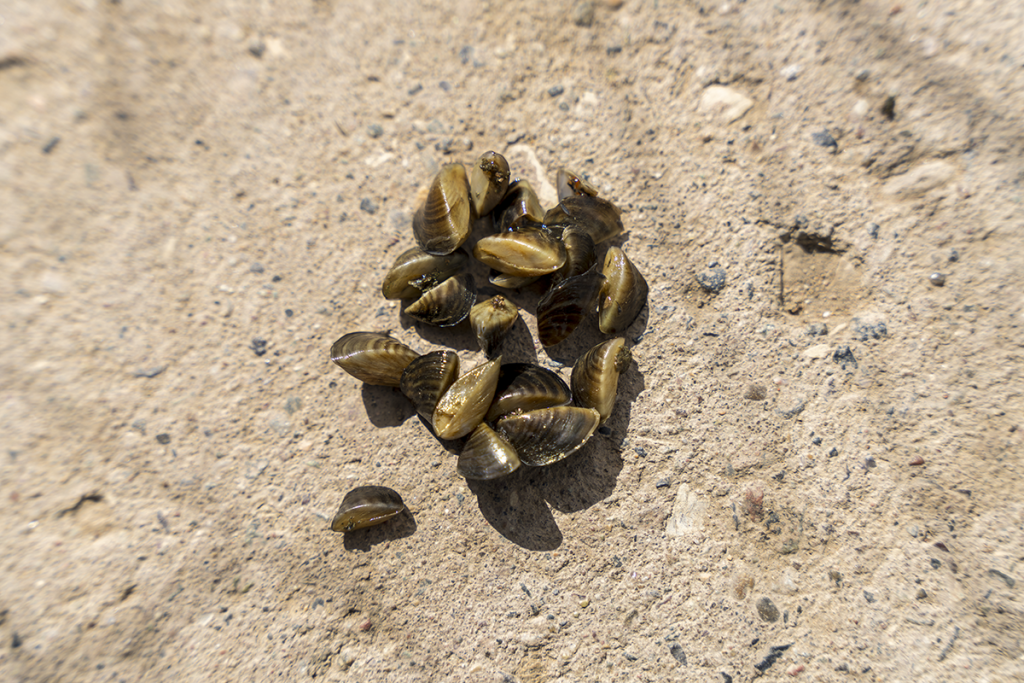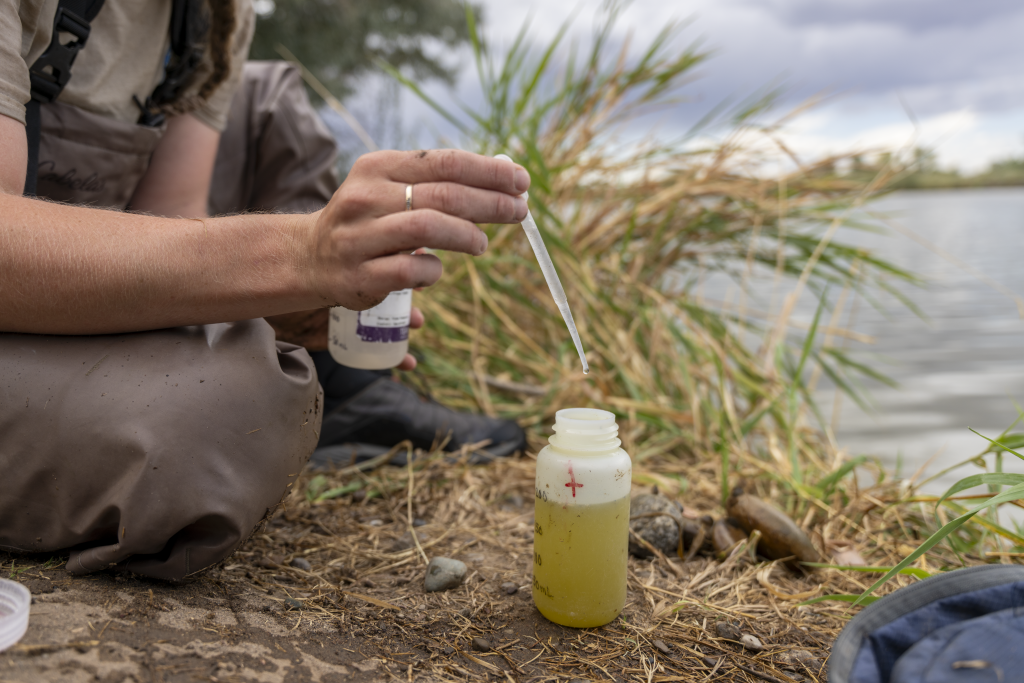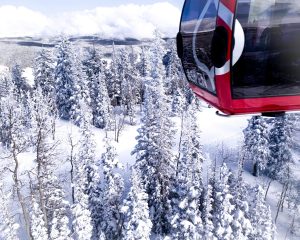As zebra mussels continue to spread in the Colorado River, is there a silver lining?
Colorado Parks and Wildlife official shares update on spread of zebra mussels in Colorado River system

Rachael Gonzales/Colorado Parks and Wildlife
While detection of the highly invasive and destructive zebra mussels has stacked up in Colorado this year, Colorado Parks and Wildlife is starting to answer critical questions about the infestation.
“2025 has been a really interesting year; we’ve uncovered a lot of pieces of the puzzle,” said Maddie Baker, Colorado Parks and Wildlife’s invasive species specialist, at the Colorado River District’s 2025 Water Seminar in Grand Junction on Friday, Oct. 3.
Zebra mussels are an invasive aquatic species notorious for their prolific reproduction and destruction of ecosystems and infrastructure. The mussels were first discovered in Colorado in 2022 at Highline Lake State Park west of Fruita.
While additional discoveries have been made each year since, this summer has brought increased sampling activity and detections of both adult zebra mussels and veligers, the species’ free-floating larvae. There are now five bodies of water — including a stretch of the Colorado River — that are considered “infested” with zebra mussels. This designation is given to waterways where there is an established and reproducing population of the species.
“When we thought mussels were only present at Highline Lake State Park, that was one thing, but now we’re talking about the Colorado River,” Baker said. “So we will be making these decisions with consideration for recreational opportunity for infrastructure protection and, ultimately, for our resource protection of our water and making sure that we can continue to get that where it needs to go.”
Part of the challenge with zebra mussels is that they multiply quickly once established and then are extremely difficult to eradicate. A single zebra mussel can produce up to 30,000 veligers in one spawning event and up to one million in a year.
When they root and attach to hard surfaces — like docks, rocks and pipes — and their density increases, the mussels can cause significant damage and clogging to water infrastructure. In aquatic ecosystems, it can be difficult to single out one invasive species without impacting the entire system.
As Parks and Wildlife continues to sample Western Slope waterways for zebra mussels, the agency is looking for answers to how the species was introduced, how they are spreading and the extent of their presence.
One critical piece of this puzzle came in July when Baker said she “discovered a very mature population of zebra mussels” in a private body of water in western Eagle County during routine water surveying.
While Parks and Wildlife is not disclosing the exact location of the lake, Baker confirmed that it “was connected to the Colorado River, and is no longer connected to the Colorado River.”
The lake’s owner has cooperated with Parks and Wildlife, allowing staff to apply copper sulfate
molluscicide — the same applied at Highline Lake in 2023.
Baker said that there has been a “decent die-off” of mussels following the molluscicide, but that it will be a while before the application can be deemed a success.
“It will take several years of ongoing sampling for us to really know whether or not we have gotten rid of all of the mussels in that body of water,” Baker said.
“The good news is that we were able to apply it during the summer, where the water temperature is high and the zebra mussels are very metabolically active, which means that they were taking in that chemical at a much greater rate than they had been at somewhere like Highline (Lake) where we were doing treatments during the fall and winter time outside of irrigation season,” she added.
Parks and Wildlife applied two treatments of the molluscicide in Highline Lake in 2023. Subsequent attempts to eradicate zebra mussels from the lake included drawing down the water level and eventually draining it completely during the 2024-25 winter. However, the lake again tested positive for zebra mussels in June.

A September detection of zebra mussels in East and West Lake — which is filled by a canal system and connects directly to the Colorado River — also provided Parks and Wildlife with good information about the invasive species spread on the Western Slope.
The lake is part of the wildlife area section of the James M. Robb Colorado River State Park near Grand Junction, and is owned by the U.S. Bureau of Reclamation.
“There is no surface water recreation allowed there, so we are optimistic that recreation has not been and will not be a factor for spread with this particular location,” Baker said. “So we know with relative confidence that the reason there are mussels in this body of water is just the natural flow of the water in the hydrological system since they have been introduced to the Colorado River.”
It’s one of the silver linings in Colorado’s zebra mussel spread.
“The good news is that these mussels were likely not transported by recreation,” Baker said. “They are present in the Colorado River, and they are going where the water flows within the system that feeds off of the Colorado River.”
Of course, this comes with bad news as well, Baker added.
“This is a very expensive system,” she said of the Colorado River. “It is not something that we can simply drain. It is not something that we can throw a bunch of chemicals at. This is something that we are going to have to find a way to live alongside and manage.”
At the annual seminar, Baker told attendees that she was recently asked by a reporter when Parks and Wildlife was just going to give up in trying to understand and mitigate the spread of the invasive species.
“My response to that is whenever we don’t need water to survive anymore. That is when we are going to give up this fight,” she said.
With the complete eradication of zebra mussels a difficult task, a significant part of Parks and Wildlife’s response comes down to mitigating and preventing the spread of zebra mussels. Primarily, this includes asking all water users to clean, drain and dry any motorized and hand-launched vessels and fishing gear after exiting any body of water.
AVSC successfully hosts first annual Heart of Gold event
Aspen Valley Ski & Snowboard Club successfully hosted the first annual Heart of Gold celebration Tuesday, Sept. 30, honoring the people and businesses whose time and talents enable youth throughout the greater Roaring Fork Valley to experience winter sports through its programs.










